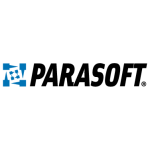What is most valuable?
It is introducing a lot more flexibility for us. It reduces time scales, getting time to market. It also helps us cross-skill some of the people, and start to really bring that DevOps mentality into the bank.
I suppose in our payments estate in the bank, it's key to us. Anything that we need to put through to payments, regulatory, industry-leading, that kind of thing, we need to get there quicker. It's expensive to maintain those complex systems. Virtualization gives you the opportunity to do that a lot cheaper. We can stand up those versions of it, rather than build the humongous end-to-end environments that they always require. It's helping drive that testing down to being a lot leaner.
How has it helped my organization?
It's time to market of course, and also the total cost of ownership. We don't have to build big end-to-end environments anymore. Previously, any major project would come along and say, "I need to build more kit," and you just keep filling data centers. You just can't sustain that. It's expensive to maintain, and we don't always close those down; so someone's paying to keep the lights on.
Whereas with SV, we can negate some of that, and actually just build them up against the virtual service. You still use the end-to-end environments at the end of the day for your site testing, but it means that actually we can get through the primary parts of it a lot quicker. It's good.
What needs improvement?
I think the ones we've wanted have come through, actually. Because ours was such an old version, and we said at the time, "We'd like to see x, y, and zed". They're already in 9, and what I've seen of version 10, it's even more closely bundled with some of the other offerings as well. From what we saw, the biggest challenge we had at the time was that it didn't link in well with the repository, but it's now there. It's now got the open interfaces to get hold of the other stuff that it works closely with. Once we get the upgrade nailed, we'll probably get more benefit out of it.
I think for future versions, CA need to help customers get to an app store mentality where, when it comes to upgrades, I shouldn't have to go through a whole loop again every time I want to upgrade. If I tick a box, push it out to me. That's what I'd like to see. I'm sure they're probably working on that in some way, somewhere, but that would help me as a customer. For small customers, it's probably a lot easier if you've only got a few servers to upgrade. I've got 35 different servers for SV. I've got 800 people who downloaded it and are using it. It's a big user base, so to actually plan and implement the upgrade is a mammoth task in itself. Anything that would help me do that better next time would be a big positive for me.
What do I think about the stability of the solution?
We have had no issues with stability. It's been absolutely rock. It really has. When we scaled it, it's done everything we asked of it. We know the limitations: it doesn't always have the built in protocol handlers out-of-the-box, and you can't expect it to do every single one. We've had support from CA to build them. They came and helped us write some. As long as they're aware, they'll reach out and help us out. That's really great.
What do I think about the scalability of the solution?
We have had no issues with the scalability. We've scaled it probably bigger than most customers, to be honest. The biggest challenge I've had is upgrading. We're on a pretty old version. It is a big leap. It takes a lot of effort to upgrade to the next one. Versions 8, 9, and beyond, I'm told are very easy to upgrade to. We're on 7, 7.5. It has taken a lot of time and effort for me to get off that version and onto a support base that I can take. That's the biggest challenge I have.
How are customer service and support?
We do use technical support. I've got a good relationship manager. We probably only have one or two tickets open every month. We manage most of those things internally. We've got that capability there now, but technical issues coming through to CA? Yeah, we use it and then we got good service from them.
Which solution did I use previously and why did I switch?
We knew we needed to invest in a new solution because of time scaling costs. Testing environments were just becoming more complex. We were having to quote ridiculous amounts of money to build more and more end-to-end environments. The challenge was that every project wanted to have their own. They wouldn't share. "Why should I share? Why don't you share?"
With SV, the whole idea is that you can have your own version, I don't care what you do with it. I can spin up as many versions as you need, very quickly, cost-effectively. Beforehand it was, you can only sustain the growth of bigger end-to-end environments to a certain extent before you say, "Sorry, there's no room left." You can't say that to the business. The business needs to change, so you have to find an alternative way.
How was the initial setup?
It should have been straightforward, and it could have been better. I've given this feedback a couple of times previously. The focus is on getting the technology in, but it's less focus on the how do I change my organization to adopt the software? I think from other feedback I've heard, a lot of people have the same thing. It's not the, what it can do; it's the, how do I make it work in my organization? We had to focus a bit more on that. Once CA heard that message, I got all the support I needed, but it wasn't there as part of the service delivery for bringing it in. There are things on both sides.
Which other solutions did I evaluate?
I think it was just CA Service Virtualization we were evaluating at the time. We were looking at the IBM service virtualization offering, and I think Parasoft was in there as well. It just came down to this: it was the best offering for us at the time.
I need a vendor to understand my business and be proactive in telling me how they can help me with my business, rather than just being a vendor. You've got to be more than a vendor these days to stand out above the others.
What other advice do I have?
Get the right level of buy-in from your organization. Understand how to get people to adopt it, rather than focusing on what it does because the "what", everybody gets. Everybody knows what it does and how it can benefit you. It's making sure you've understood your organization and how you've got to convince people to change and adopt it. It's a whole new journey on how to get new tools into a company. It could be SV. It could be anything. That was a big learning curve for us. We didn't get the right people on board to buy into it. It's just beating your head against the wall internally to try and make change. You couldn't understand why anybody else wouldn't want it? I get it now. Convincing others was the biggest challenge I had.
Disclosure: My company does not have a business relationship with this vendor other than being a customer.








Thanks.